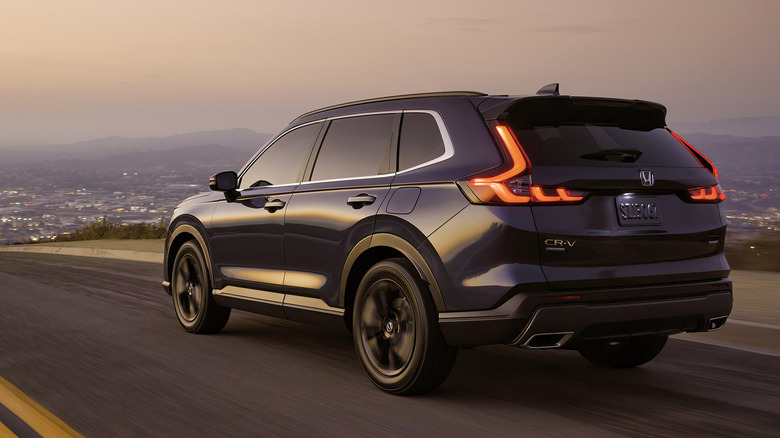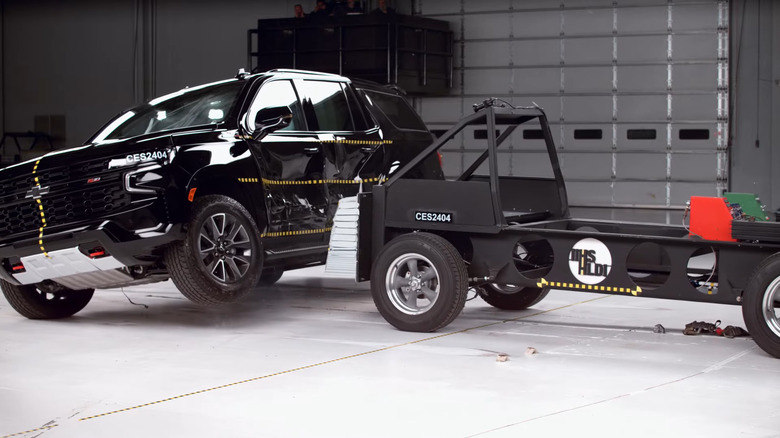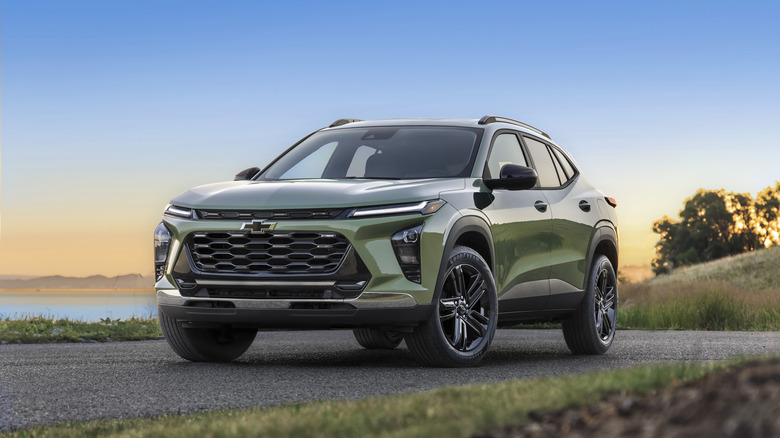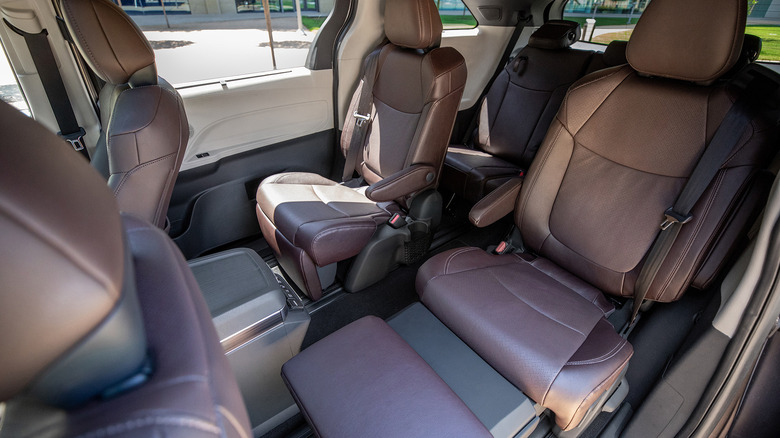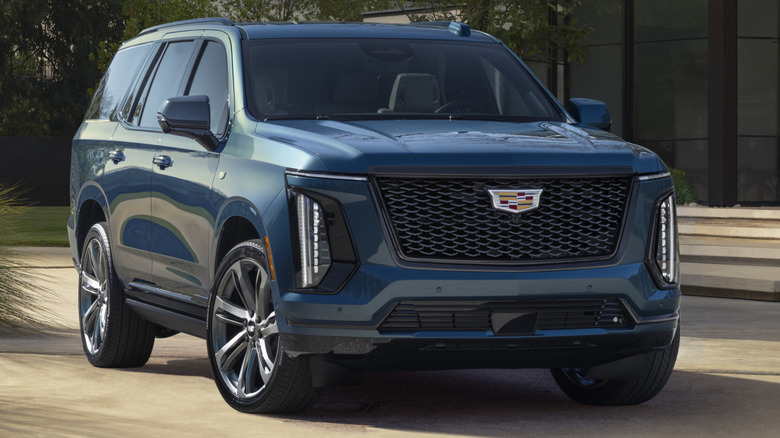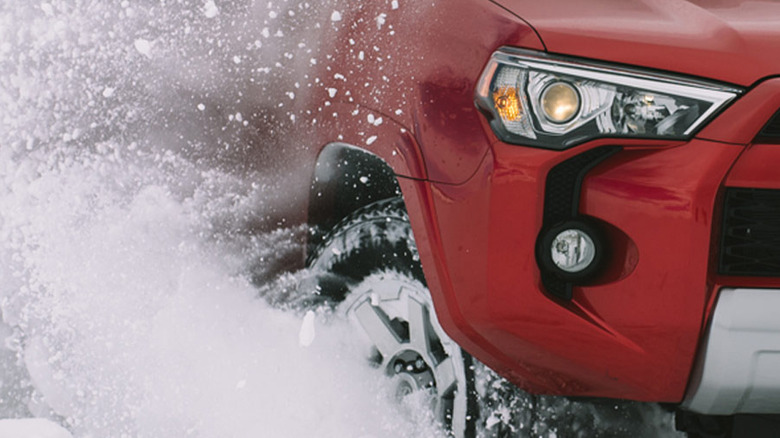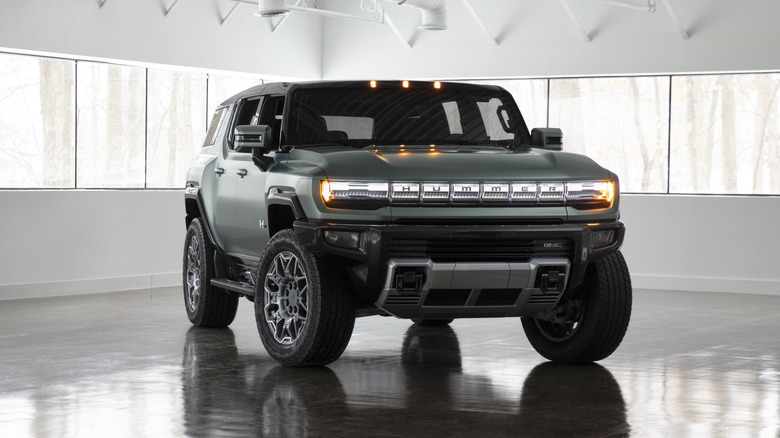6 Myths About SUVs You Need To Stop Believing
SUV started taking over the automotive industry in the 1990s, when car-based crossover-type models like the Toyota RAV4 and Lexus RX began to appear. These vehicles promised some of the adventurous vibes of real SUVs, but with better handling and comfort. Now the takeover is complete, and SUVs are the new master race in the industry, slaughtering body styles like sedans, hatchbacks, and minivans. But Are they really better? It's a tough question to answer — everyone has a different opinion, it seems.
Regardless, it's an undeniable fact that people love driving SUVs and that automakers love building them in the millions. Or at least, selling them — profit margins on SUVs are higher than on sedans or minivans, and automakers are mainly here to make money, after all. But a lot of the other reasons that people often bring up to explain the SUV craze are not facts. Some are outright myths, and that's what're going to cover here.
Some of these myths might surprise you; others might make you question your next car purchase. However, we promise you'll learn something new, and see the automotive future through a different lens. Because, while SUVs are undoubtedly part of the future, they shouldn't be the only solution. So without further ado, let's crack the SUV code!
SUVs are safer than regular cars
To be fair, SUVs are in fact safer in a collision with smaller vehicles than the average car. And it's not even close, either — according to a 2013 study by the University of Buffalo, the odds of dying are a staggering 7.6 times higher for the passenger in the smaller vehicle. However, head-on collisions are just a part of the story. Pedestrians, cyclists, and motorcyclists are part of traffic, too. Don't forget about static objects, too.
To put it bluntly, SUVs suck in all other areas. According to a 2021 study by the University of Illinois Springfield, SUVs are 8 times more likely to kill children in an accident than passenger cars. Moreover, SUVs were the culprit of 14.7% of the studied accidents including pedestrians and cyclists, yet were involved in 25.4% of the fatalities. That's quite a significant difference, involving people who are much less protected than the passengers. And it shouldn't be surprising — SUVs weigh more than passenger cars, and have massive frontal areas that can pretty much hit every inch of your body.
Let's not overlook the pure physics factor, too. SUVs sit higher from the ground than regular cars. The high road clearance moves the center of gravity upward, leading to a higher rollover risk. Meanwhile, the added heft makes it harder for SUVs to stop, leading to longer braking distances than regular vehicles. And last time we checked, these active safety factors can mitigate or fully prevent accidents.
All SUVs are built for off-roading
Initially, SUVs were in fact built to get dirty in the mud or crawl over large rocks. Military-oriented vehicles like the Jeep Willys were the first SUVs, and came equipped with a standard 4x4 system designed specifically for off-road use. And later, when SUVs started gaining popularity among the general public, mostly people who frequently traversed challenging terrains bought them.
Today, things are different. Crossover-type, unibody SUVs dominate sales, and most of them are very poor on even the easiest terrains. Front-wheel drive is pretty much the norm, with all-wheel drive being offered as a costly add-on.
Most crossover SUVs also lack other necessary hardware. No locking differentials. Highway-only tires. Short-travel suspension. Nothing to actually help you overcome large rocks or plow through deep mud. Sure, the higher clearance might help on gravel, but that's pretty much the only scenario where they beat passenger vehicles — and some smaller crossovers don't even have that. The 2025 Chevy Trax sits 7.3 inches off the ground.
This might trigger something of an "aha" moment about body-on-frame SUVs, and they do have an advantage for off-roading. But the fact is, most of these don't come standard with 4WD. Models like the Chevrolet Tahoe, Ford Expedition, and Toyota Sequoia, all come with rear-wheel drive as standard. Forget about locking differentials or all-terrain tires. Again, the higher road clearance makes them more capable than a passenger car, but they aren't built to go off-roading. Instead, their selling point is space and practicality.
SUVs have the most practical cabins
There is no doubt that a similarly sized crossover or SUV offers better practicality than a sedan. The higher roof in the back means you can remove the parcel shelf and carry bigger items in the cargo area. They usually offer more headroom, too. The comparison doesn't hold up against hatchbacks, though.
For instance, the 2024 Subaru Crosstrek has a 19.9 cubic foot cargo volume with the rear seats up, while the 2024 Honda Civic Hatchback offers 24.5 cubic feet. The Crosstrek does offer a higher passenger volume (100.5 cubic feet to 99.9 cubic feet), but the difference is negligible. Meanwhile, wagons offer similar space to larger SUVs and are usually better for carrying longer items.
Minivans are the real winners in this particular competition, and it's not even close. Passengers get more legroom, headroom, and shoulder room, and will be able to carry more cargo. Minivans also offer multiple seating configurations, allowing users to freely move chairs forward/backward, providing functionality that's out of reach for the SUV people.
Ingress/egress in minivans is also easier, thanks to the low ground clearance and huge door apertures. Seats are lower, too, making them more comfortable for kids or people with disabilities. Most minivans also have sliding rear doors, which more functional in tight spaces. So, if you have a big family, you might want to look at current minivan offerings, like the legitimately useful Toyota Sienna Hybrid (image above), which is even available with AWD.
SUVs provide better road visibility
This is quite a controversial one, because crossovers and SUVs absolutely provide better forward visibility. You sit higher in an SUV, and thus can look farther ahead, even overtop smaller cars in front of you. Even if you drive behind another SUV, chances are you'll be able to see through its windows.
However, crossovers and SUVs miss the mark in all other visibility areas. Due to their colossal hoods, they obstruct the view right in front of the vehicle. On average, modern crossovers and SUVs have a frontal blind zone of 16 feet, which makes it hard for the driver to spot kids or pets. Predictably, these vehicles are twice as likely to kill a pedestrian, particularly kids.
Adding a front camera to an SUV will mostly solve the frontal blond spot issue, but there are more considerations. These vehicles obstruct the view of other drivers, mainly those driving smaller vehicles, contributing to worse overall road safety. SUVs also have a terrifying side blind spot, and more often hit pedestrians while turning.
Crucially, SUVs significantly obstruct the view of pedestrians, cyclists, and motorcyclists. Imagine you need to push a baby stroller through a pedestrian crossing, with huge SUVs parked on the right lane. There is simply no way for you to look over these vehicles; you'll need to go close to the next lane to have a peek. If you are distracted, you might even push the stroller first. Meanwhile, you can easily look over sedans and hatchbacks.
SUVs are better for winter driving
All-wheel drive and four-wheel drive vehicles have better acceleration traction than two-wheel drive cars, particularly on snow. Since SUVs and crossovers are more often equipped with AWD and 4WD, it means they are better on snow-covered roads. Debate over, right? Not so fast!
Acceleration is only one aspect of driving — you also need to steer your vehicle and stop eventually. And these are the areas where SUVs suffer, regardless of weather conditions. Due to their higher mass, they have longer braking distances, particularly in slippery conditions. Higher mass also leads to less lateral grip, meaning there's a higher chance of skidding. To add insult to injury, SUVs have a higher center of gravity, and thus, are more prone to rollovers.
So, all things equal, a sedan would be safer on snow than an SUV. Sure, you won't get stuck as easily if your SUV is equipped with AWD, but passenger cars are also often equipped with AWD today. Even the latest Toyota Prius is now a hybrid head turner with available AWD. Besides, replacing your all-season with winter tires will make a much bigger difference than the vehicle itself.
Electrified powertrains solve the SUV's pollution problem
SUVs are heavier and have worse aerodynamics, leading to worse fuel efficiency and higher emissions. For example, The Toyota Camry and RAV4 use a similar hybrid system with a 2.5-liter gas engine, yet the entry-level Camry LE is rated at 51 mpg combined, while the RAV4 LE has a 40 mpg combined rating. Thus, quite predictably, SUVs were the second-highest contributor to carbon emissions from 2010 to 2018, after the power sector.
And no, slapping an electric powertrain won't save the efficiency issues of SUVs. For instance, the Tesla Model 3 has an EPA estimated range of up to 363 miles, while its crossover alternative, the Model Y, is rated at up to 337 miles. The Model Y even has a slightly larger battery pack (80.5-kWh versus 79.7-kWh). Heck, the latest GMC Hummer EV off-roader needs a humongous 205-kWh battery to provide a 381-mile range. This is important because, for every metric ton of mined lithium, 15 tons of CO2 are emitted into the atmosphere.
But that's only the tip of the iceberg. Looking past CO2, SUVs are worse at emitting harmful particles that can threaten people's health. And it's not only via the tailpipe — tires produce more particle pollution than the car's tailpipe. Ouch! SUVs, crossovers, and heavy vehicles, in general, are worse in this case, as they work their tires more than smaller passenger cars. Battery-electric powertrains certainly won't change that.
